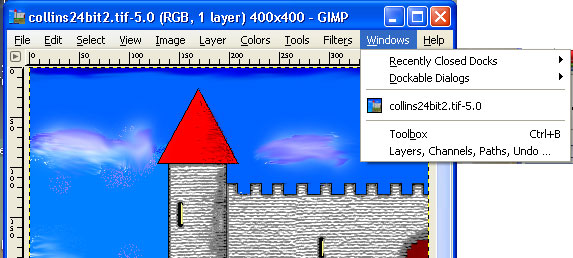![]()
![]() R. Craig Collins >
Intro to Computer Graphics >
Intro to GIMP
R. Craig Collins >
Intro to Computer Graphics >
Intro to GIMP
Intro to GIMP © R. Craig Collins, 2007
There is a wide array of digital image editing software that can deal with basic gif files, from Microsoft Paint to Paintshop Pro, from GIMP to Adobe Photoshop. But to deal with transparency, you need to go up a step from Microsoft Paint. While Photoshop is often considered the gold standard, GIMP is more than adequate for our tasks... and is an open source program (read: free; not only is the software free, but there is also a free on-line book you may use for reference: GIMP-Savvy).
If you don't already have it on your machine, you can Download GIMP free. About GIMP.
NOTE, GIMP LOADS VERY SLOWLY, NORMALLY PAUSING ON FONTS
Once started, GIMP opens in multiple windows (note: if all windows don't open, see below)
The Toolbox window, the GNU Image Manipulation Window, and the Layers... window (more about that later).
Important: To close GIMP, click the [X] on the Toolbox Window, NOT the Layers Window.
- 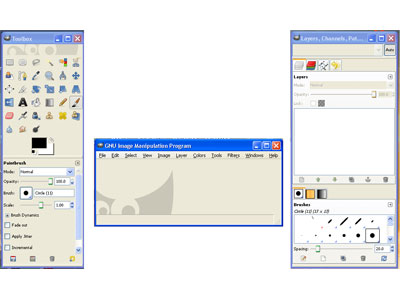
Choose File/Open to open an image.
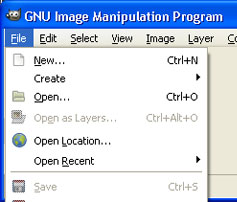
Locate the file you wish to edit
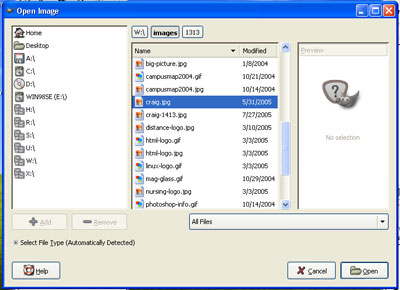
The opened image, and the GIMP windows
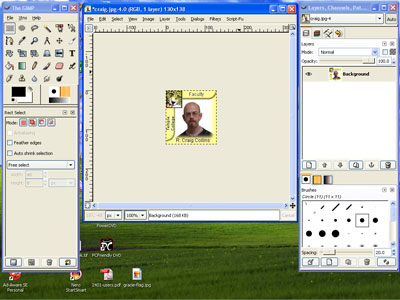
To begin with, we won't be using a lot of different options...
Most of what we will do will be on the Image window:
File Edit Select Image Tools
Save Cut All Crop Image Color tools ->color balance
Save As Copy None ->brightness-contrast
Paste
*If GIMP does not open the Toolbox or Layers window,
in the GNU Image Manipulation Window
Choose Window, then click the missing item, either
Toolbox
or
Layers, Channels, Paths, Undo...
